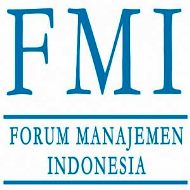The measurement of the Islamic values for muslim workers
DOI:
https://doi.org/10.32832/jm-uika.v9i2.1560Keywords:
Islamic values, the Meaning of Prayer, Confirmatory Factor Analysis (CFA), Islamic Banks.Abstract
The objectives of this study were to set up an instruments to measure Islamic values and meaning of prayers (sholat.) The Islamic values consisted of tauhid (unity), khilafah (trusteeship) and adalah (justice). Factors of pray essence consist of 6 (six) variables namely concentration, understanding, respect, fear and admiration, hope for mercy and bless and shamefornegligence. This study took place in Islamic Banks namely Bank Muamalat Indonesia (BMI) and BNI Syariah. Data analysis used for this study was Confirmatory Factor Analysis (CFA). The results showed all indicators that reflected the Islamic values were valid and reliable that was consisted 22 item questions.Construct reliability (CR) and variance extracted (VE) for Islamic values were 0,79 and 0,58. Concentration, understanding, respect, fear and admiration,indicatedthe meaning of prayer that were valid and reliable (CR 0,90 and VE 0,69), consisted nine item questions. Spiritualityin the workplacecan bedevelopedthrough theapplication ofIslamic valuesand prayer and it could be measured by these instruments.
References
Abuznaid, S. A. (2009). Business ethics in Islam: the glaring gap in practice. International Journal of Islamic and Middle Eastern Finance and Management, 2(4), 278–288.
Ahmad, I. (2004). Islam, commerce and business ethics. Pleanary address presented at the Loyola Institute for Ethics and Spirituality in Business International Ecumenical Conference.
Akdere, M., Russ-Eft, D., & Eft, N. (2006). The Islamic Worldview of Adult Learning in the Workplace: Surrendering to God. Advances in Developing Human Resources, 8(3), 355–363. https://doi.org/10.1177/1523422306288428
Ali, A. J., & Al-Owaihan, A. (2008). Islamic work ethic: a critical review. Cross Cultural Management: An International Journal, 15(1), 5–19.
Amin, A. R., Fajrie, A., Hamidi, M. L., & Noer, U. S. (2004). The celestial management: zikr, pikr, mikr. Senayan Abadi Publishing.
Bashir, A. H. (1998). Ethical norms and enforcement mechanism in profit-sharing arrangements. The Mid-Atlantic Journal of Business, 34(3), 255.
Collins, J. (1995). Building Companies to Last. Retrieved from https://www.jimcollins.com/article_topics/articles/building-companies.html
Ferdinand, A. (2002). Structural equation modeling dalam penelitian manajemen?: aplikasi model-model rumit dalam penelitian untuk tesis S-2 & disertasi S-3. Badan Penerbit Universitas Diponegoro.
Fry, L. W. (2003). Toward a theory of spiritual leadership. The Leadership Quarterly, 14(6), 693–727. https://doi.org/10.1016/j.leaqua.2003.09.001
Ghazali, A. (1999). Rahasia-rahasia Shalat. Bandung: Karisma.
Gibbons, P. (2000). Spirituality at work: Definitions, measures, assumptions, and validity claims. Work and Spirit: A Reader of New Spiritual Paradigms for Organizations. Scranton, PA: University of Scranton Press.
Gunawan, D. (1999). PERBANKAN SYARIAH INDONESIA MENUJU MILLENIUM BARU Suatu Tinjauan Pengembangan, Pengawasan, dan Prospek. Buletin Ekonomi Moneter Dan Perbankan, 2(3), 69–87.
Hafidhuddin, D. (2003). Manajemen syariah dalam praktik. Gema Insani.
Hair, J., Black, W., Babin, B., Anderson, R., & Tatham, R. (2006). Multivariate data analysis. New Yersey: Pearson Educational.
Jabnoun, N. (2008). Islam and Management (2nd edition). Riyadh: International Islamic Publishing House.
Jurkiewicz, C. L., & Giacalone, R. A. (2004). A Values Framework for Measuring the Impact of Workplace Spirituality on Organizational Performance. Journal of Business Ethics, 49(2), 129–142. https://doi.org/10.1023/B:BUSI.0000015843.22195.b9
Mahalli, A. M. (2002). Membangun Pribadi Muslim. Yogyakarta: Menara Kudus.
Muqaddam, A. (2008). Agar Sholat Terasa Mantap. Solo: Inas Media.
Neck, C. P., & Krishnakumar, S. (2002). The “what”, “why” and “how” of spirituality in the workplace. Journal of Managerial Psychology, 17(3), 153–164. https://doi.org/10.1108/02683940210423060
Noor, Z. (1999). ISLAM DAN TANTANGAN EKONOMI Bedah Buku M. Umar Chapra. Buletin Ekonomi Moneter dan Perbankan, 2(3), 109–113. https://doi.org/10.21098/bemp.v2i3.278
Qardhawi, Y. (1995). Norma dan Etika Ekonomi Islam. Jakarta: Gema Insani.
Quatro, S. (2002). Organizational spiritual normativity as an influence on organizational culture and performance in Fortune 500 firms. Retrospective Theses and Dissertations. https://doi.org/10.31274/rtd-180813-12142
Rahman, A. (2002). Tuhan Perlu Disembah Eksplorasi Makna Salat dan Manfaat Shalat Bagi Hamba. Jakarta: Serambi Ilmu.
Rice, G. (1999). Islamic ethics and the implications for business. Journal of Business Ethics, 18(4), 345–358.
Rousydiy. (1995). Ruh Shalat dan Hikmahnya. Medan: Rainbow.
Santoso. (2001). Etika Bisnis: Perspektif Islam. In Maryadi & Syamsuddin (Eds.), Agama Spiritualisme dalam Dinamika Ekonomi Politik. Surakarta: Muhammadiyah University Press.
Sugiyono. (2010). Statistika untuk Penelitian. Bandung: Alfabeta.
Twigg, N. W., & Parayitam, S. (2006). Spirit at Work: Spiritual Typologies as Theory Builders. Journal of Organizational Culture, Communications and Conflict, 10(2), 117.
Wijanto, S. H. (2008). Structural equation modeling dengan Lisrel 8.8: konsep dan tutorial (Vol. 3). Yogyakarta: Graha Ilmu.
Yousef, D. A. (2001). Islamic work ethic – A moderator between organizational commitment and job satisfaction in a cross?cultural context. Personnel Review, 30(2), 152–169. https://doi.org/10.1108/00483480110380325
Yusuf, C. F. (1997). Etika Bisnis Islam: Sebuah Perspektif Lingkungan Global. Jurnal Ulumul Qur’an, 3.
Downloads
Published
How to Cite
Issue
Section
License
Authors who publish with this journal agree to the following terms:
- Authors retain copyright and grant the journal right of first publication with the work simultaneously licensed under a Creative Commons Attribution-NonCommercial-ShareAlike 4.0 International License that allows others to share the work with an acknowledgement of the work's authorship and initial publication in this journal.
- Authors can enter into separate, additional contractual arrangements for the non-exclusive distribution of the journal's published version of the work (e.g., post it to an institutional repository or publish it in a book), with an acknowledgement of its initial publication in this journal.
- Authors are permitted and encouraged to post their work online (e.g., in institutional repositories or on their website) prior to and during the submission process, as it can lead to productive exchanges, as well as earlier and greater citation of published work (See The Effect of Open Access).











